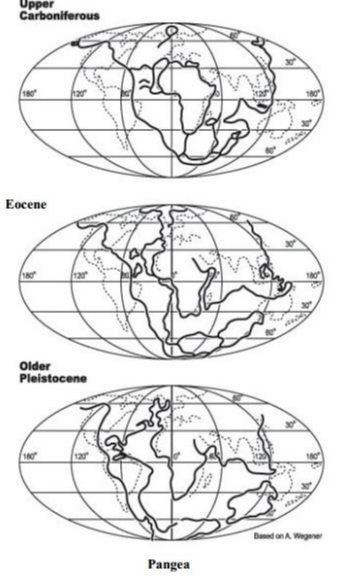2.1. Continental Drift Theory of Alfred Wegener
It was Alfred Wegener – a German meteorologist - who put forth a comprehensive argument in the form of “the continental drift theory” in 1912. Wegener was a climatologist who wanted to explain the change of climates in the geological past. There are several geological evidences to show that there have been important and large scale changes in the climates of the world in the geological past. He came to the conclusion that either the climatic zones have moved or if they have not, then there has been movement of the landmasses. The distribution of Climatic belts of the world is governed primarily by the Sun. It, therefore, appear to be more probable that the landmasses have changed their position.
According to Wegener, all the continents formed a single continental mass, a mega ocean surrounded by the same. The super continent was named PANGAEA, a Greek word which meant all earth. The mega-ocean was called PANTHALASSA, meaning all water as shown in figure 1a. Wegner also imagined that in the carboniferous period the South pole was near the South African coast and the north pole lay in the Pacific ocean.
Wegener argued that, around 200 million years ago, the Pangaea began to split. The initial two blocks – Gondwanaland and Laurasia – started drifting away and in between a shallow sea emerged by filling up the water from Panthalasa. It was known as Tethys Sea. The present shape and relative position of the continents is the result of fragmentation of Pangaea by rifting and the drifting apart of the broken parts (figure 2). He called this drifting away of continents as Polflucht or the flight from the poles. He took help of theory of Isostasy in which the continental blocks, made of SIAL, are floating over the ocean floor, made of SIMA.

